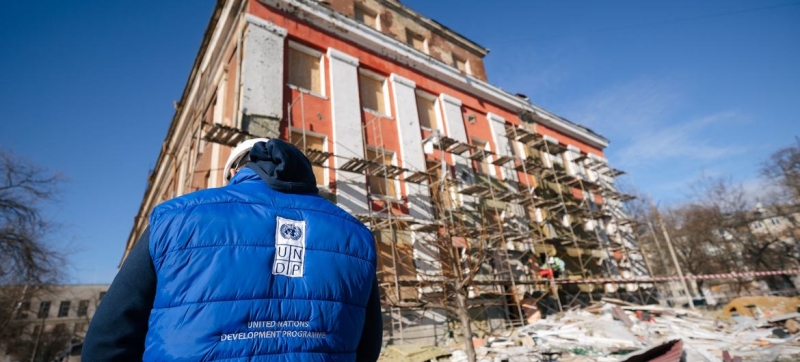
A damaged school building in Nikolaev, which is being restored with the support of the UN and the European Union. Restoring Ukraine will require $486 billion Economic development
Rebuilding Ukraine after the destruction caused by the war will require $486 billion over the next 10 years. This conclusion was reached by representatives of the Ukrainian government, the UN, the World Bank and the European Commission, who conducted a joint assessment of the damage caused to Ukraine by the full-scale invasion of the Russian Federation and the needs in the field of reconstruction. The results of the assessment were published on Thursday. By comparison, at the end of last year the cost of rebuilding the country was estimated at $411 billion.
“Despite the ongoing full-scale war, the Ukrainian government, with the support of international partners, continues to implement the rapid recovery program,” said Prime Minister of Ukraine Denis Shmyhal.
It is estimated that the highest needs for restoration and reconstruction are in the housing stock (17 percent of the total), the transport sector (15 percent), and trade and industry (14 percent). percent). At the same time, in all sectors, the cost of clearing rubble and disposal of construction waste alone reaches almost 11 billion dollars.
15 billion – this year alone
According to Ukrainian authorities, in 2024 alone the country will need about 15 billion dollars for reconstruction projects, both nationally and locally, which need to be addressed immediately. Particular attention should be paid to supporting and mobilizing the private sector, along with the restoration of housing, infrastructure, as well as the services, energy and transport sectors, experts emphasize.
According to the results of the assessment, about $5.5 billion was received from Ukraine’s international partners, as well as from its own resources. That is, as of now, about $9.5 billion is missing for restoration work in 2024.
“We have seen renovation needs continue to grow over the past year. The main resource for the restoration of Ukraine should be the confiscation of Russian assets frozen in the West. We need to start this process this year. At the same time, the Ukrainian government is creating conditions for attracting private investment that will accelerate the recovery process and transform our country on its way to the EU,” the UN quotes Shmygal as saying.
Extent of damage
During joint work to assess the damage caused to housing, transport, trade, industry and agriculture, experts came to the conclusion that its size reached almost 152 billion dollars. The Donetsk, Kharkov, Lugansk, Zaporozhye, Kherson and Kiev regions suffered the most.
Across the country, 10 percent of the housing stock was damaged or destroyed. The destruction of the Kakhovka Dam and hydroelectric power station in June 2023 resulted in significant negative impacts on the environment and agriculture, and exacerbated the challenges already faced by people trying to access housing, water, food and health services.
Read also:
UNESCO: two years of war caused $3.5 billion in damage to the cultural and tourism sectors of Ukraine
“The last two years have witnessed unprecedented suffering and losses for Ukraine and its people,” said Antonella Bassani, World Bank Vice President for Europe and Central Asia.
“However, while this updated assessment documents extensive damage and associated needs, it is also a testament to Ukraine’s resilience, demonstrating that the dedication of its people and their ability to adapt have already helped reverse some of the damage and begin to move toward recovery.” , she added.
Prospect for joining the EU
Since As Ukraine prepares for the EU accession process and related reforms, experts emphasize that the country’s recovery must be built back better.
Since the publication of the previous damage assessment a year ago, the government of Ukraine, with the support of partners, managed to achieve certain results: in 2023, a billion dollars were allocated to restore the housing sector, most of this amount went to the repair and reconstruction of damaged buildings.
In the transport sector, emergency restoration work was carried out on sections of highways and roads with a total length of 2 thousand kilometers. In the education sector, the authorities have restored about 500 educational institutions, and since January 2023, the proportion of educational institutions with bomb shelters has increased from 68 percent to 80 percent.
“The war is not over. The suffering is not over yet,” said Denise Brown, UN coordinator in Ukraine. “But communities in Ukraine are showing courage and commitment to an inclusive recovery, and they need the continued support of international partners,” she added.
